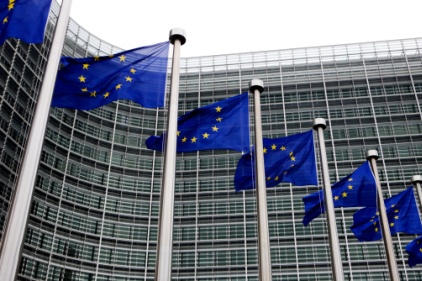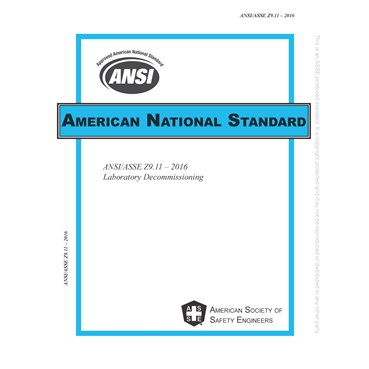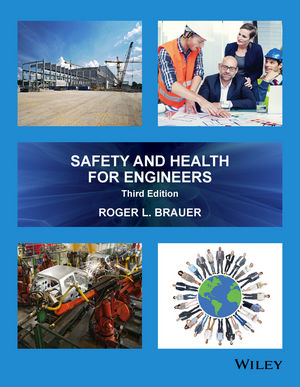 Dr. David Michaels, Assistant Secretary of Labor for Occupational Safety and Health, spoke recently at the Seventh EU/US Joint Conference on Occupational Safety and Health Brussels, Belgium:
Dr. David Michaels, Assistant Secretary of Labor for Occupational Safety and Health, spoke recently at the Seventh EU/US Joint Conference on Occupational Safety and Health Brussels, Belgium:
It's a pleasure to once again see the friendly faces of my esteemed colleagues who share common interests in protecting workers and seeking solutions to improve workplace safety on both sides of the Atlantic and around the world.
One year ago several of us gathered here in Brussels to meet with the European Parliament's Committee on Employment and Social Affairs. Together, we underscored the importance of US-EU transatlantic engagement – specifically the importance of sharing ideas, leveraging resources, and finding common solutions to address occupational safety and health hazards that concern us all.
In my remarks at the Parliament last year, I spoke of both our progress and the challenges that we face as we strive to improve working conditions in our individual nations and together. I noted that "in these competitive, challenging times, the United States and the European Union need each other more than ever."
I remain convinced that these meetings are the time and place for optimism, courage, imagination, and bold action.
Learning from Each Other
These meetings provide us a valuable opportunity to collaborate, share ideas and, together, develop solutions to key occupational safety and health problems. It is my earnest hope that the discussions taking place this week will strengthen our partnerships and lead to enhanced worker rights on both sides of the Atlantic.
Today we will announce one tangible outcome of US-EU discussions that took place two years ago in Boston: the launch of the Global OSHwiki website. This website allows safety and health professionals in the United States and the European Union to share resources and data on hazards that workers face around the globe. The website also provides a common platform for our continuing dialogue, and a modern tool to broaden and deepen understanding and cooperation.
In the arena of worker safety and health, the US and EU have similar concerns and similar goals, although we sometimes employ distinct approaches to address workplace hazards. OSHA eagerly welcomes the opportunity to discover new methods that have been successfully implemented in the EU.
In fact, OSHA has taken several strategies initiated by the EU and we have adapted them in the US where they have been highly successful – receiving national attention and wide support from other government agencies, the news media, public and private organizations, workers, and business groups.
For example: Based on the campaign model used in the EU, OSHA recently initiated a series of national outreach programs in the United States to raise awareness of particular workplace hazards and solutions. We are using both traditional outreach methods as well as new online social media to communicate our message of worker safety and health – with encouraging results.
These include programs to combat heat-related illnesses, which affect thousands of outdoor workers every year; to prevent falls, which is the number one cause of fatalities in the construction industry; and to assist health care facilities to reduce worker injuries and illnesses.
In this latter case, OSHA recently took notice when it came to our attention that that one in every five U.S. workers injured in the private sector is a healthcare worker. Nursing aides, orderlies, and attendants had the highest rates of musculoskeletal disorders of all occupations in 2010, and the rates are actually increasing. These workers should not be forced to risk injury while caring for others.
It is not acceptable for these workers to continue getting hurt at such high rates. OSHA has responded by launching a new National Emphasis Program that will focus our resources through outreach efforts and inspections on hazards in nursing homes and residential care facilities over the next three years.
In another example of learning from each other: When OSHA celebrated its 40th anniversary last year, we emulated the EU with our own photo contest to highlight workplace safety and health. We received more than 300 submissions portraying a wide range of industries and workplace activities. I invite you to visit OSHA's website to see these artistic and inspiring photos that help advance the cause of worker rights, dignity and safety – and I thank the EU for giving us the idea!
Convergence
In a time of multinational corporations and interconnected economies, global approaches to improving workplace safety and health are not only better for workers; they also reduce barriers to trade and promote economic growth.
An example of this is the United Nations' Globally Harmonized System for Classifying and Labelling Chemicals (GHS). In March of this year, OSHA published its final rule to align our Hazard Communication Standard with the GHS. This standard improves the quality and consistency of hazard information in the workplace, and it will lead to reduced barriers to trade and increased workplace productivity.
Working together with a common set of rules, we all gain. As OSHA begins the process of implementing our revised Hazard Communication Standard, we look forward to joining the EU and the world community in making workplaces safer through better labeling and handling of chemicals for all our workers.
Efficient and Effective Solutions
OSHA is a very small agency, yet it has a big role to play in improving the lives of working men and women. It is important to make sure that our resources are allocated to programs that will have the biggest impact on improving worker safety and health. By determining the effectiveness of the programs and standards that we have implemented, we will be able to modify existing procedures to make them more effective, and determine how best to move forward with new programs.
Better measurements provide us with better data and more insight to make our efforts more effective, and move forward with new programs that can have a substantive and lasting effect on peoples' lives. As the Assistant Secretary of Labor, I need to know that workers are able to return home to their families at the end of the day as a result of our outreach, standards and enforcement.
In May, the respected journal Science published a peer-reviewed study conducted by researchers at the Business Schools of the University of California and Harvard University. This study looked at the impact of randomized OSHA inspections in California, and found that our inspections reduce injury rates while saving employers billions of dollars through reduced workers' compensation costs.
What is remarkable is that, by total coincidence, two additional studies were published a few weeks after this first study: One looked at the impact of OSHA inspections in Washington State; and the other at OSHA inspections in Pennsylvania – and both these studies confirmed the findings of the first study.
Studies like these are important to show us that we are on the right track, that we are developing effective ways to reach out and improve occupational safety and health. In both the US and EU, our efforts to improve conditions for workers face critics who claim that regulations interfere with the free flow of commerce.
But, three studies done by three sets of independent researchers in three different states – all reaching the same conclusion. I think we now have very strong evidence supporting what has been clear to all of us in this room: Workplace inspections don't kill jobs; they stop jobs from killing workers!
Reputable evaluations help dispel these rumors and prove to industry that safe workplaces are productive workplaces. They also show us that we at OSHA are making effective use of our limited resources. To that end, we are also looking for measurable ways to ensure that our programs are administered everywhere, at all levels, with consistent quality, effectiveness and fairness.
In this same spirit, I believe the US and the EU should commit ourselves to developing unified approaches to evaluate our common problems and to building on our successes through continuing collaboration.
Conference Topics
The US delegation is eager to build on progress made during the six previous joint meetings with our EU counterparts. The work we do at these meetings is vital. The results of our work can save lives, improve our economies, and make the world more humane for workers, more productive for employers and more beneficial to all citizens in our countries and the world over.
We need to speak with one voice about hazards hidden in new technologies. Work hazards do not suddenly vanish when designers introduce "green technology" into construction projects. New technologies carry the promise of great environmental and economic benefits, but we must not we blinded by this "green glow." Green jobs may reduce our carbon footprint, but they do not always reduce existing hazards to workers; in some cases these technologies may actually bring new dangers into the workplace. In addition to embracing innovation, we need to monitor, measure and insist on reasonable measures of caution and hazard prevention for workers.
Concern over the hazards in green jobs is one of our conference's four topics of discussion over the next three days. We also share the EU's concerns over how to evaluate possible workplace hazards posed by the increasing use of nanotechnology. This is not the time to be complacent, to take a "wait and see" attitude. Let's not delay, only to find out years from now that thousands of workers were indeed at risk. We have the opportunity now to put protective measures in place as this technology is developed.
And, like you, we want to evolve the world's approach to Occupational Exposure Limits for chemicals. It's clear that current approaches that address chemicals individually are not sufficient to protect workers from the tens of thousands of hazardous substances in commerce today. In the US, we have engaged stakeholders in discussions to find more effective approaches to managing chemical hazards in the workplace, and we are eager to learn from the EU's experience – particularly in regards to what we can learn from REACH.
We also share the EU's concerns for how to prevent catastrophic workplace events such as refinery fires and explosions from combustible dust and reactive chemicals. We need to find ways of reaching small and medium-sized enterprises to make sure they understand why and how to evaluate their workplaces and take measures to prevent disasters.
Finally, we continue to be concerned about how to best use recordkeeping and data collection to help us make cross-national comparisons, monitor long-term trends, and recognize emerging hazards. This is why we are looking forward to the special session among governments at this conference to examine our data-driven programs and move toward universally agreed metrics. There are significant differences in the approaches and requirements of collecting data on work-related injuries in the US and across the EU. Increased understanding of the data could lead to more accurate and complete data, better use of the data, and ultimately, to safer and more healthful workplaces for everyone.
The Work Begins
While we soon begin the important work of our conference, the most important action begins after this conference ends. If we are diligent and successful in confronting the many challenges to improving working conditions, we will make tangible improvements in the lives of workers, their families, their communities and our nations.
Let's remember the laborers in our nations and around the world whose futures are in our hands. As we approach our discussions with resolve, imagination and optimism, let's aim to put these discussions to effective use. We have achieved much in our past meetings, and can achieve much more if we do our work well.





